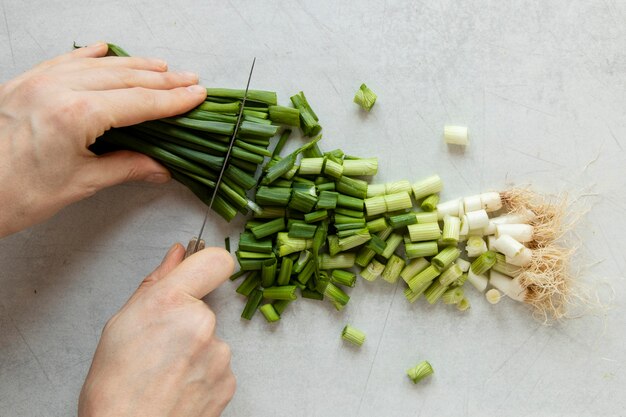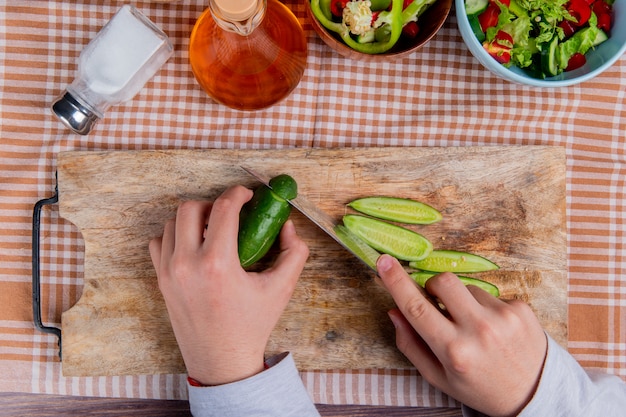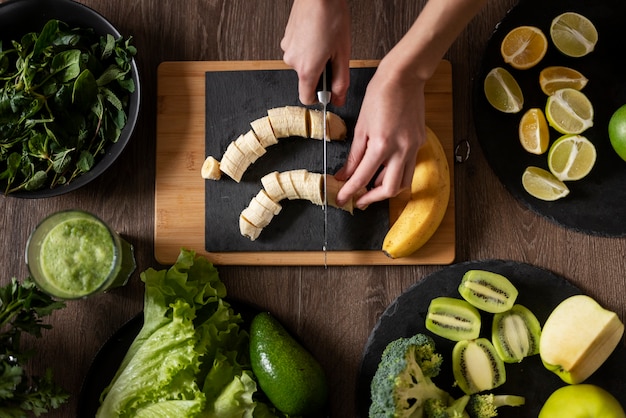You've got a beautiful bunch of asparagus, ready to be transformed into a delicious side dish. Roasting is a fantastic way to bring out its natural sweetness and create a satisfyingly tender-crisp texture. But how long do you roast it at 400 degrees Fahrenheit? The answer, like most things in cooking, is: it depends! There's a delicate dance between undercooked and overcooked asparagus, and I'm here to guide you through it, based on years of experience and many a culinary mishap.
I've roasted asparagus until it's been practically reduced to charcoal, and I've left it in the oven for what felt like an eternity, resulting in sad, mushy spears. But through trial and error, I've discovered the secrets to perfect roasting. Let's dive into the fascinating world of asparagus, shall we?
Part 1: The Foundation of Perfect Roasting: fresh asparagus

Fresh is Best: The Importance of Quality Ingredients
Imagine biting into a limp, wilted piece of asparagus. Not exactly an appealing experience, right? That's why choosing fresh, vibrant asparagus is the first step to success. Think of it as building a house: a strong foundation is essential for a sturdy structure. Similarly, good ingredients are the foundation of a delicious dish.
Signs of perfect asparagus: What to Look For
Asparagus has a short season, so you want to make sure you're getting the best. Here's what to look for at the supermarket:
- Vibrant Green Colour: Dull or yellowed spears indicate older asparagus, which might be a bit tougher. Go for the bright green ones!
- Firm Tips: The tips should be firm and not floppy. This is a sign of freshness and good quality.
- Tightly Closed Buds: If the buds are open, it suggests the asparagus has been sitting around for a while.
- Avoid Damage: Look for spears that are free from any signs of wilting, bruising, or breakage. You want the best starting point for your culinary masterpiece.
Part 2: Preparing Your Asparagus for the Oven

Trimming: Removing the Woody Ends
Those tough, woody ends of asparagus won't soften no matter how long you cook them. They'll just leave you with a bitter taste in your mouth. The easiest way to remove them is to use the "snap" method:
Hold the asparagus spear near the base and bend it gently. The spear will naturally snap where the tender part ends and the woody part begins. It's a quick and easy way to get rid of the unwanted bits.
Washing and Drying: Ensuring a Crisp Finish
Once you've trimmed your asparagus, give them a good rinse under cool running water. This will remove any lingering dirt or debris. Then, pat them dry with a clean kitchen towel. You want to ensure your asparagus isn't wet when it goes into the oven, otherwise, it'll steam instead of roast.
Optional: Marinating for an Extra Flavor Boost
Now for the fun part! While not essential, marinating your asparagus before roasting can add an incredible depth of flavor. Here's my go-to marinade:
- A drizzle of extra virgin olive oil: This helps to tenderize the asparagus and creates a beautiful sheen.
- A pinch of salt and freshly ground black pepper: Enhances the natural flavors of the asparagus.
- A sprinkle of garlic powder: Adds a subtle garlicky aroma.
- A squeeze of lemon juice: Adds a touch of brightness and acidity.
Mix it all together and toss your asparagus in the marinade. Let it sit for a few minutes for the flavors to infuse.
Part 3: roasting asparagus at 400 Degrees Fahrenheit: The Golden Rules

Baking Sheet Preparation: Ensuring Even Cooking
Line your baking sheet with parchment paper. This makes cleanup a breeze, prevents sticking, and helps to ensure even cooking.
Spacing Matters: Avoiding Steaming
Don't overcrowd your baking sheet! You want to ensure each spear has enough space to roast evenly. If necessary, use two baking sheets to spread your asparagus out in a single layer. This allows for good air circulation, preventing steaming and promoting a crispy texture.
The Temperature is Key: 400 Degrees Fahrenheit
Preheat your oven to 400 degrees Fahrenheit (200 degrees Celsius). This is the perfect temperature for roasting asparagus and achieving that ideal tender-crisp texture.
The Magic Number: 10-15 Minutes
Pop your asparagus on the baking sheet and roast for 10-15 minutes. This is a general guideline. The actual cooking time will depend on the thickness of the spears. Thicker spears will need a few extra minutes.
Part 4: Checking for Doneness: The "Tender-Crunch" Test
Don't Just Rely on the Timer
While the timer is a helpful guide, it's not the only indicator of doneness. Give your asparagus a gentle poke with a fork or your finger. It should be tender, but still retain a slight crunch. Think of it as a "tender-crunch" test.
Visual Cues: A Transformational Roast
As your asparagus roasts, it undergoes a transformation:
- Darker Green Colour: The asparagus will develop a slightly deeper, richer green hue.
- Browning Tips: The tips will start to turn a light brown color, indicating they're cooked to perfection.
Part 5: Serving Your Perfectly Roasted Asparagus
Seasoning: Elevating the Flavors
Roasted asparagus is delicious on its own, but adding a touch of seasoning can take it to the next level. Here are some ideas:
- Lemon Juice: A squeeze of fresh lemon juice adds brightness and tang.
- Fresh Herbs: Chopped herbs like parsley, chives, dill, or thyme add a burst of freshness.
- Balsamic Vinegar: A drizzle of balsamic vinegar creates a sweet and tangy glaze.
- Salt and Pepper: Always essential for enhancing the natural flavors.
Pairings: Making Your Meal Complete
Roasted asparagus is a versatile side dish that complements a wide range of dishes. Here are some winning combinations:
- Grilled Meats: Steak, chicken, salmon, or lamb all go perfectly with roasted asparagus.
- pasta dishes: Add roasted asparagus to a creamy pesto pasta, or toss it with a light lemon sauce.
- Salads: Roasted asparagus adds a delightful textural element to salads, especially with spring greens.
- Risotto: Roasted asparagus pairs beautifully with the creamy richness of risotto.
Part 6: Avoiding Common asparagus roasting mistakes
Mistake 1: Overcooked Asparagus
Nobody wants mushy asparagus! The telltale sign of overcooking is a limp, soft texture. To avoid this, check your asparagus regularly and use the "tender-crunch" test.
Mistake 2: Undercooked Asparagus
If your asparagus is still too firm, give it a few more minutes in the oven. It's better to err on the side of undercooked than overcooked. You can always roast it for a bit longer if needed.
Mistake 3: Unevenly Cooked Asparagus
This often happens when the baking sheet is overcrowded. Make sure your asparagus is spread out in a single layer with enough space between each spear for air circulation. If you have a large batch, use multiple baking sheets.
Part 7: Exploring Different roasting techniques
Roasting with Olive Oil and Lemon
This is a classic and delicious way to roast asparagus. Simply toss your asparagus with olive oil, lemon juice, salt, and pepper. The olive oil adds a sheen and enhances the flavor, while the lemon juice provides brightness.
Roasting with Garlic and Herbs
For a more aromatic and flavorful roast, add minced garlic and fresh herbs to your asparagus before roasting. Think thyme, rosemary, or oregano for a delightful combination.
Roasting with Balsamic Vinegar
For a sweet and tangy twist, drizzle balsamic vinegar over your asparagus before roasting. The balsamic vinegar will caramelize in the oven, adding a complex layer of flavor.
Part 8: The nutritional powerhouse of Asparagus
A Springtime Superfood
Asparagus isn't just delicious, it's a nutritional powerhouse. It's packed with vitamins, minerals, and antioxidants, making it a true superfood.
Benefits of Eating Asparagus: A Healthy Choice
- Boosts the Immune System: Rich in vitamin C, asparagus helps to protect your cells from damage.
- Promotes Heart Health: A good source of potassium, which helps to regulate blood pressure.
- Improves Digestion: A good source of fiber, which keeps your digestive system running smoothly.
- Supports Healthy Bones: A good source of vitamin K, which is essential for bone health.
Part 9: FAQs About Asparagus Roasting
FAQs
| Question | Answer |
|---|---|
| Can I roast asparagus with other vegetables? | Absolutely! Asparagus pairs well with other spring vegetables, such as carrots, potatoes, and zucchini. Just make sure to adjust the cooking time accordingly, as different vegetables have different cooking times. |
| How do I store leftover asparagus? | Store leftover roasted asparagus in an airtight container in the refrigerator for up to 3 days. You can reheat it in the oven or microwave. |
| Can I freeze asparagus? | Yes, you can freeze asparagus. Blanch it first by boiling it for 2-3 minutes, then plunge it into ice water to stop the cooking process. Drain and freeze in an airtight container. |
| What's the best way to reheat roasted asparagus? | I find that reheating roasted asparagus in the oven is the best way to retain its texture and flavour. Just spread it out on a baking sheet and bake it at 350 degrees fahrenheit (175 degrees Celsius) for about 5-10 minutes. |
| What's the difference between green and white asparagus? | Green asparagus is harvested before the spears have emerged from the ground, while white asparagus is harvested after the spears have emerged and been blanched by the soil. White asparagus has a milder, sweeter flavour than green asparagus. |
So there you have it. My guide to roasting asparagus at 400 degrees Fahrenheit. It's a simple process that yields delicious results. Remember, it's all about finding that sweet spot between tender and crunchy. Just follow my tips, and you'll be on your way to creating the perfect roasted asparagus. Enjoy!
Everyone is watching

Corn on the Cob: The Ultimate Guide to Perfectly Cooked Ears
Healthy MealsAh, corn on the cob. Just the name evokes images of sunny days, barbecues, and that sweet, juicy flavour that ...

Perfect Pork Roast Oven Cooking Time: A Guide to Delicious Results
Healthy MealsThere's something truly satisfying about a perfectly roasted pork. The aroma alone is enough to make your mout...

Ham Cooking Time: How Long to Bake, Smoke, or Boil a Delicious Ham
Healthy MealsAh, ham. It's a classic, isn't it? A real crowd-pleaser, especially around holidays. And when done right, it'...

Scallops: The Ultimate Guide to Perfect Cooking
Healthy MealsAh, scallops. Those delicate, sweet, and utterly delicious morsels of the sea. They hold a special place in my...

Spaghetti Squash: The Ultimate Guide to Cooking and Serving
Healthy MealsRemember that time you saw spaghetti squash at the supermarket, looking all bumpy and strange, and thought, "W...
